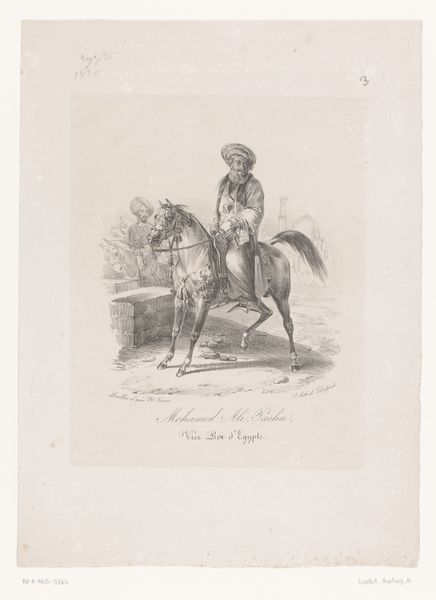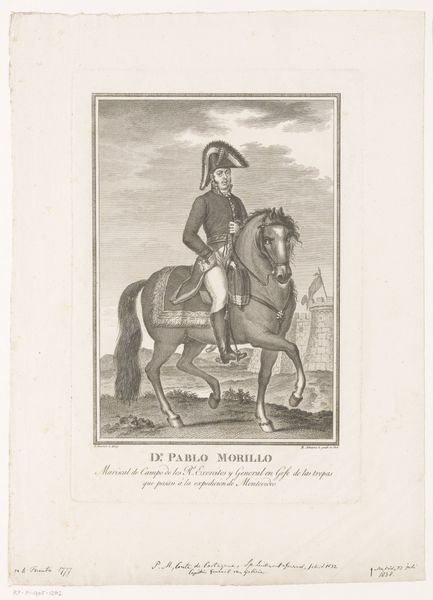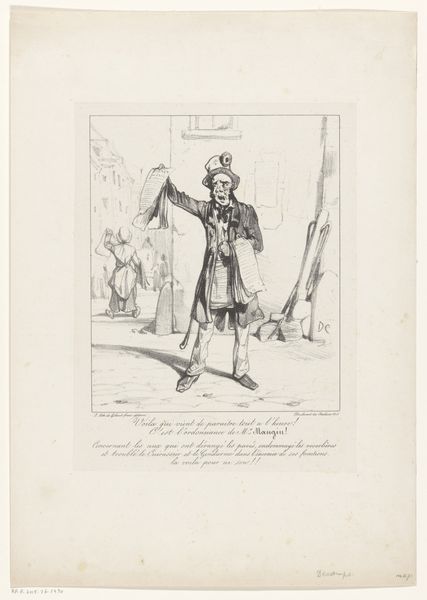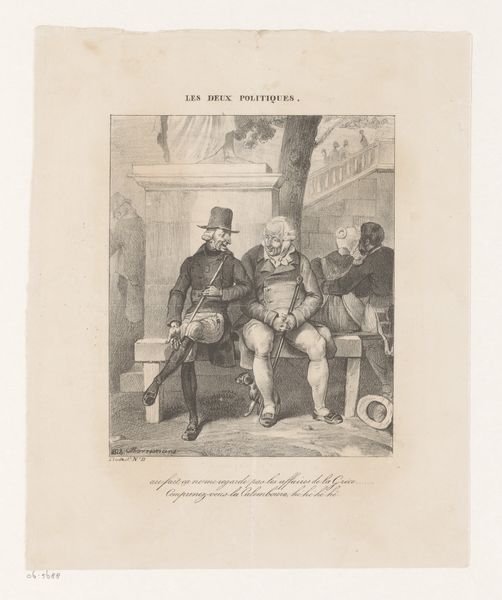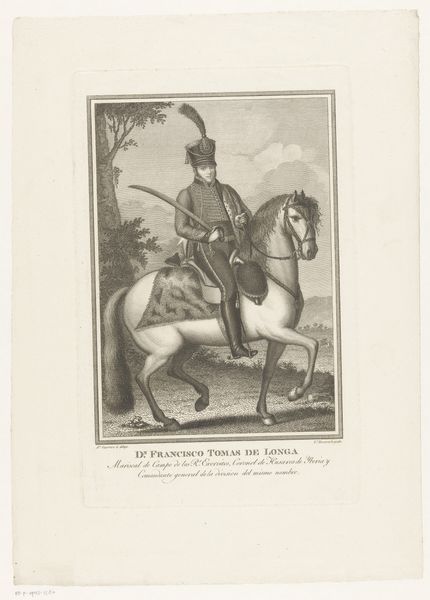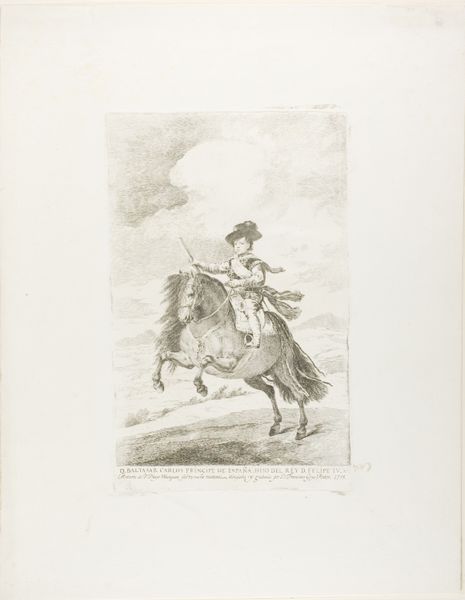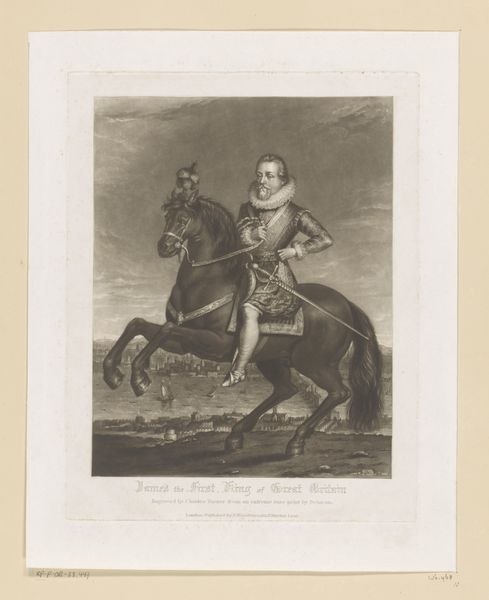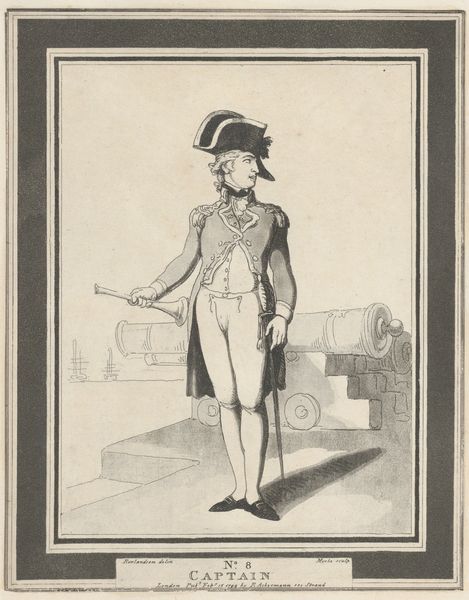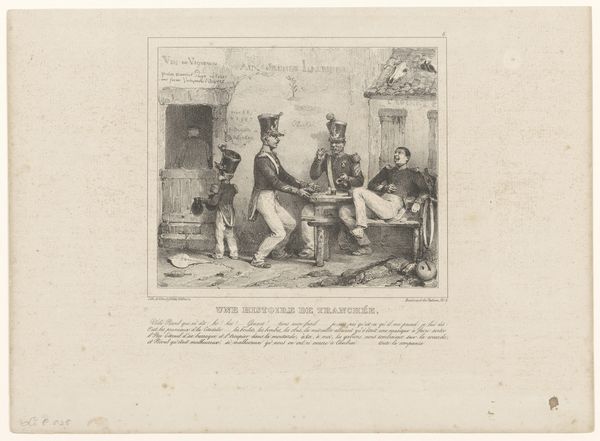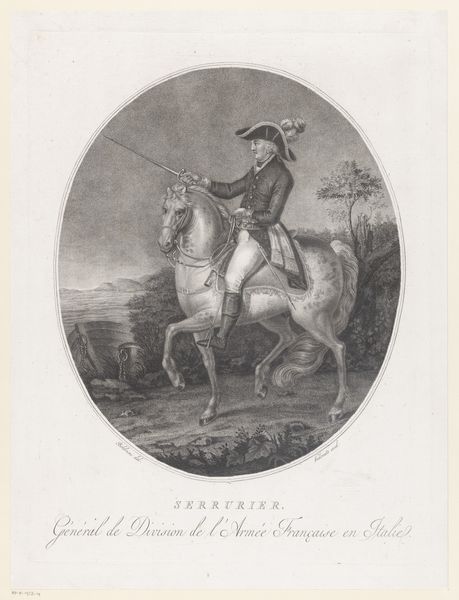
drawing, print, ink, engraving
#
drawing
#
aged paper
#
toned paper
#
light pencil work
#
narrative-art
#
ink paper printed
# print
#
old engraving style
#
figuration
#
personal sketchbook
#
ink
#
ink drawing experimentation
#
romanticism
#
sketchbook drawing
#
watercolour illustration
#
genre-painting
#
sketchbook art
#
engraving
Dimensions: height 359 mm, width 244 mm
Copyright: Rijks Museum: Open Domain
Curator: Let’s take a closer look at "Two Actors During a Play" by Paul Gavarni, created around 1838. It is held at the Rijksmuseum. What are your initial impressions? Editor: Well, the most striking aspect is its monochromatic quality and how the characters inhabit this sparse scene. There's an almost theatrical quality to the print’s composition, emphasized by its elegant economy. Curator: Indeed. Notice the tonal range achieved through engraving and ink on paper. The lines define the figures. The starkness reinforces a particular dramatic sensibility. What can we tell from Gavarni’s handling of the materials here? Editor: Given its execution as an engraving and the use of paper, there's an immediate connection to mass production, making it accessible, of course, and intended to be seen as such. The sketchiness and imperfection feel part of its purpose. We can almost sense Gavarni’s hand and time as well as an indication that theatrical representation may need be as polished in person or in paint. Curator: The semiotics are fascinating, wouldn’t you agree? We see the costuming and postures acting to project clear roles—a sort of class critique. Editor: True, class distinctions embedded in everyday representation. Beyond the finished print, I am left to imagine the labor needed. What process did it undertake between conceptual idea to its existence as reproducible material. How did the economic support its making? And where did this very material— the paper and the inks—originate? It has value simply as cultural artifact, apart from the play being portrayed within it. Curator: Perhaps we can read the interplay of light and shadow as Gavarni playing on the surface-depth dichotomy in a larger commentary. A surface analysis gives way to a profoundness embedded in artistic genius. Editor: I'm less focused on this surface depth as you put it and instead remain interested in who its primary audience was back in 1838. That likely determined its formal constraints. What limitations impacted his materials? Curator: It seems we find our interests as distinct, always. Editor: Always a gift to engage together though!
Comments
No comments
Be the first to comment and join the conversation on the ultimate creative platform.
